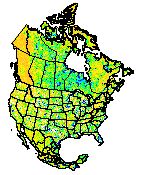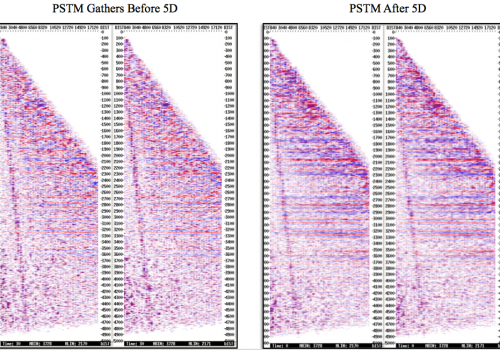 Click Image to Enlarge
Click Image to Enlarge
5D improves the signal to noise ratio in the data in a robust and natural way. Data does not appear overly filtered as with other noise reduction methods. Standard 3D PSTM suffers from irregular coverage at different offsets due to culture and cost constraints. Empty bins within each offset cause migration “edge effects”; by interpolating/regularizing data into those empty bins, the migration is constrained to reduce those effects. Flamingo uses the domains of offset, azimuth, inline, crossline, and time as the 5 dimensions for interpolation. This has been proven to be a very powerful tool to clean up prestack and poststack data as shown in these examples.


